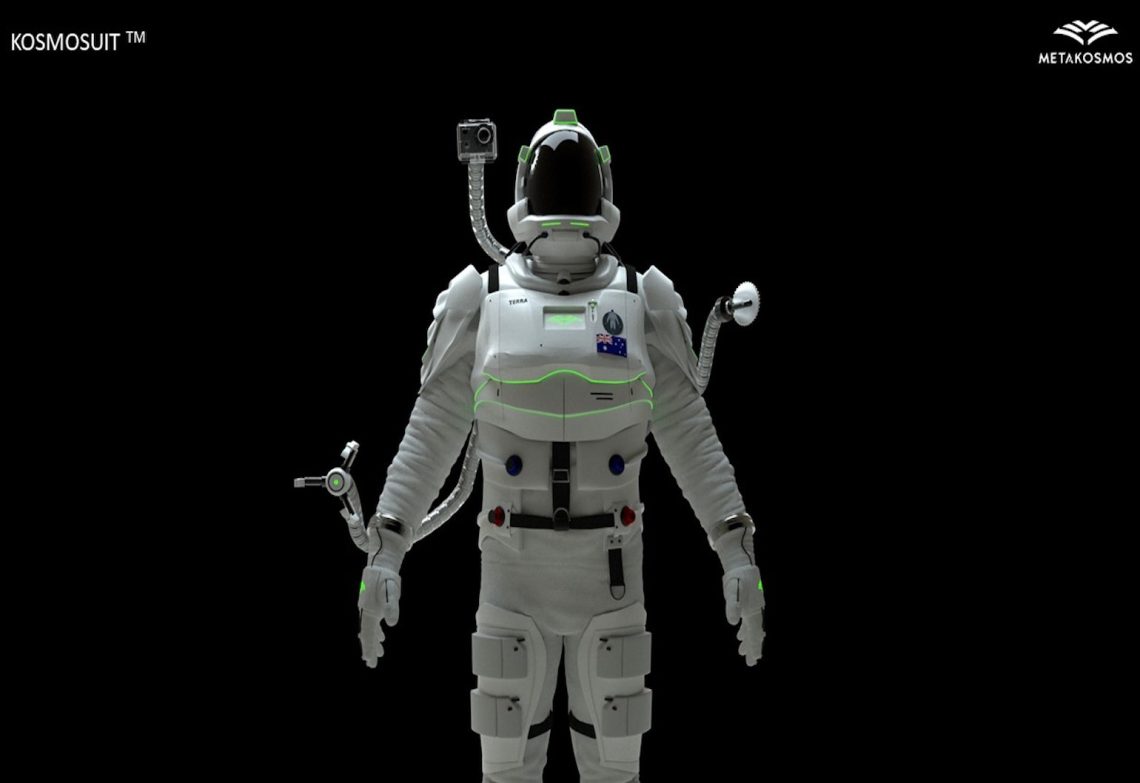Space tourism is about to take off and $15 million space suits just won’t fit the budget. This Australian company aims to tackle the issue with a bit of sci-fi-inspired technology.
“Imagination is an important characteristic of the entrepreneur, and fiction is an inspiration to discovery, innovation and invention,” said Kiriti Rambhatla, electrical engineer and CEO of Sydney-based startup Metakosmos at the recent Avalon Airshow.
Rambhatla began his talk with an image from the dust jacket of Jules Verne’s famous 1865 book, From the Earth to the Moon. Verne’s imagined story of three people travelling in a “spaceship” to the moon was quoted by Neil Armstrong as Apollo 11 returned to Earth more than a century later.
Rambhatla sees this as symbolic of the connection between art and science since the industrial revolution and an inspiration for his own venture: Metakosmos, with a mission to make spacesuit technology scalable and accessible.
Space suits for the “mass market”
Up until recently, the space industry operated within the government and defence industries, where, Rambhatla said, “to a certain extent, cost didn’t matter”.
“The Apollo spacesuits cost around $600,000 each [in today’s money]. Space Shuttle suits cost about $15 million each, and the planned Artemis lunar mission suits will cost around $20 million. For commercial space tourism, the cheapest seat is expected to be Virgin Galactic’s, at $250,000 for a 90 minute flight. Obviously, the cost of the space suit for such a flight has to be only a fraction of NASA’s suit costs.”
He estimates the need for 10 million people in spaceflight to make it sustainable.
And so the idea was born for the Metakosmos Kosmosuit; a blending of science fiction and technology to reduce a significant barrier to the spaceflight experience.
Rambhatla explains that Metakosmos offers three suits: Terra, Aqua and Vyom. He describes the products as “a suit platform”, as there are both physical components and sensors and software. In fact, Rambhatla uses the acronym SAAP: Suit as a Platform.
The Kosmosuit platform consists of an exo-suit, a base layer sensor-suit, and the Kosmosuit Studio software.
The exo-suit is designed to absorb impact and protect from injuries, as well as provide thermal management. Just as critically, the sensor-suit incorporates biomarker tracking with non-invasive sensors that won’t require blood tests to track, among other things, muscle function, the ageing process, stress, and radiation.
The software provides for suit configuration and analysis of biomedical, environment, cognitive, and biomechanics data.
Progressive technology
Suits for alien environments are not new, and suit technology can be traced to 17th century deep sea diver suits.
In the 20th century, flight suits were derived for the same reason: to allow humans to function in potentially lethal environments. The NASA space program resulted in flight suits that were developed into space suits.
Not many space suits were required; according to Rambhatla, in the first 60 years of space flight, only 600 people wore one. Over a similar timespan, 2.5 million people travelled on Concorde — and this was not a sufficient market for supersonic transport to be a viable business. Now that space tourism is ready to open up spaceflight to private citizens, the requirement for space suits is about to change dramatically.
[embedyt] https://www.youtube.com/watch?v=sw6zkxJE0dk[/embedyt]
Multi-purpose technology
Rambhatla’s suits are not intended just for space flight itself. The Aqua suits are for simulated microgravity underwater activity for training and research. The Terra suits are for land-based training prior to spaceflight: learning how to get into and out of a suit, and how to configure the suit and use the software.
As with many innovations, spin-off applications are likely. Suits may find purpose in other extreme environments, such as underwater welding — one of the most dangerous human occupations, according to Rambhatla — or for volcano research. Metakosmos has collaborated with research bodies including CSIRO and are developing a roadmap to see what they can achieve in the next three to five years.
Rambhatla closed his talk by summarising the big picture aims of the next generation suit: “advancing the philosophy of space technology, enhancing life on Earth, effective management of extreme conditions, and developing microgravity operations capability.”
Metakosmos participated as a member of DStart Ignite and the CSIRO kickstart program.




Thanks for covering our talk.